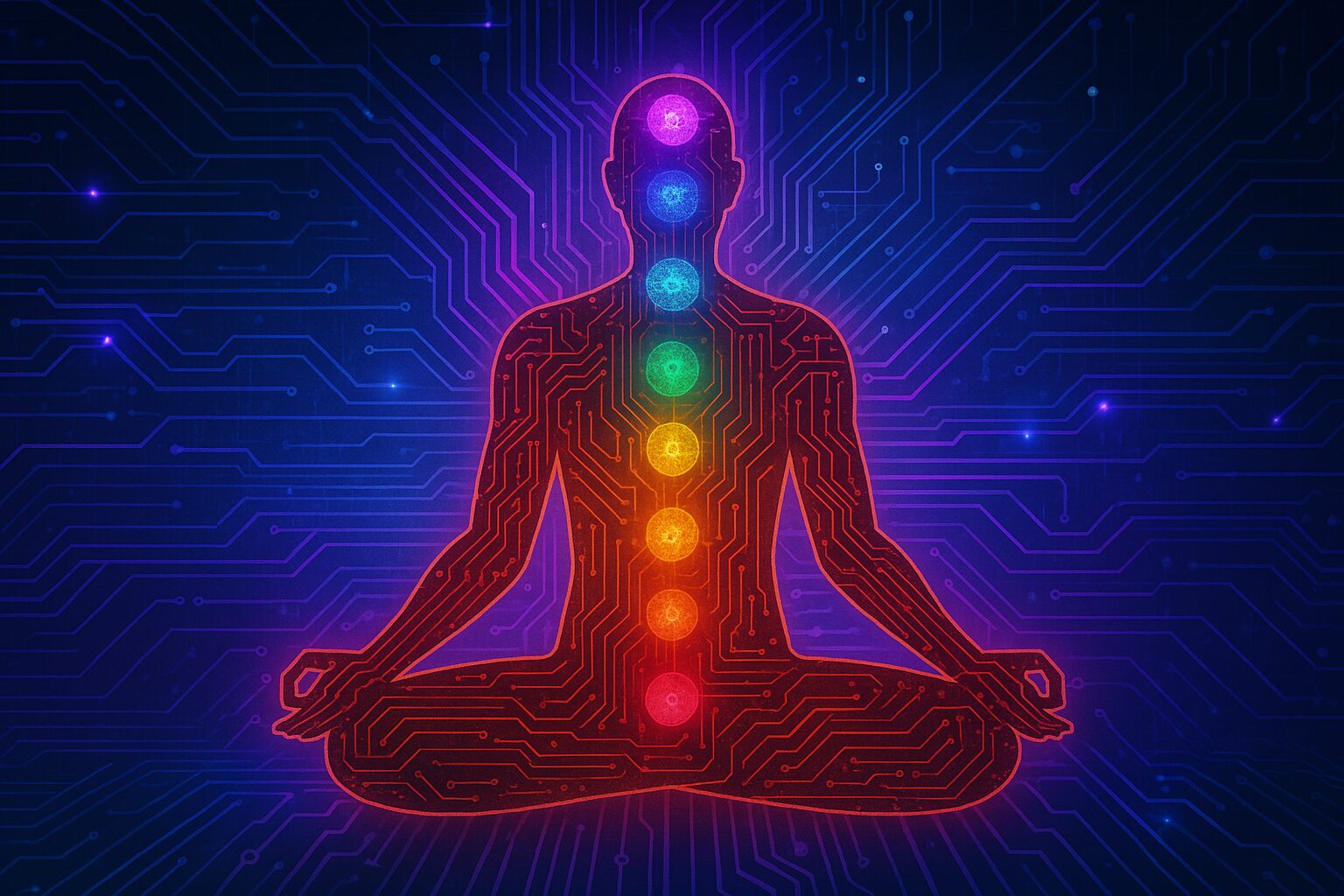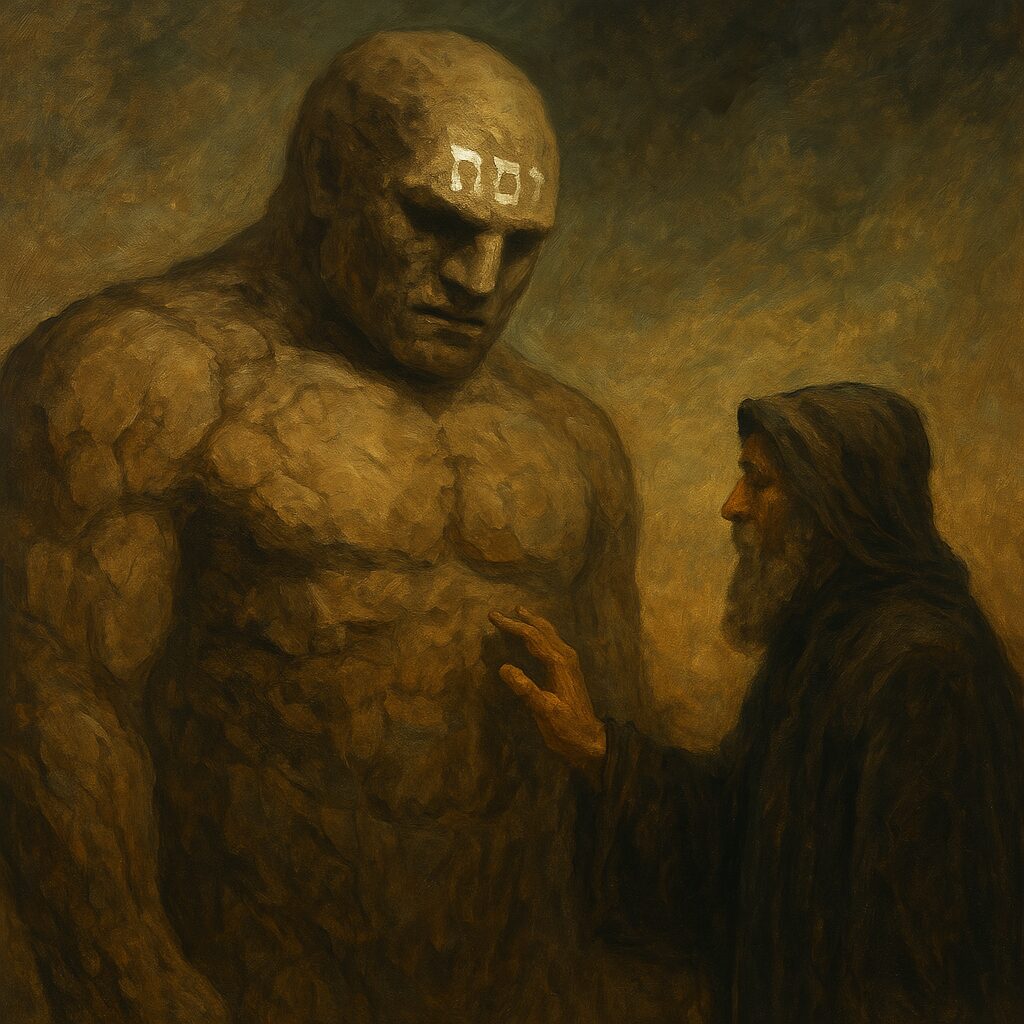“The body is not just flesh—it is a temple of frequencies.” — Digital Tantric proverb (ZionMag)
As we sink deeper into simulated spaces—VR realms, algorithmic loops, immersive digital lives—we find ourselves asking an ancient question in a modern tongue:
Where is the soul in all this code?
Mystical systems like Yoga and Tantra map the human experience through chakras—spinning energy centers that correspond to levels of consciousness. In parallel, modern life now runs through a network of digital circuits, invisible flows shaping how we connect, move, feel, and know.
Could it be that the ancient concept of the energy body is being reconfigured for the simulated age?
The Chakra Map: A System of Inner Frequencies
In classical yogic systems, there are seven major chakras, from root to crown, each representing a state of being:
- Muladhara (Root): Survival, grounding
- Svadhisthana (Sacral): Sensuality, desire
- Manipura (Solar Plexus): Power, ego
- Anahata (Heart): Love, connection
- Vishuddha (Throat): Voice, expression
- Ajna (Third Eye): Intuition, vision
- Sahasrara (Crown): Unity, transcendence
These are not physical structures, but psycho-energetic gateways—each pulsing with symbolic color, mantra, element, and archetype.
Now ask yourself: Don’t we move through similar “layers” when navigating digital space?
Digital Chakras: A New Interface for Consciousness
Let’s reimagine the chakras as digital states of being:
- 🟥 Root = Connection stability
Your grounding is your Wi-Fi—without it, you fall out of the flow. - 🟧 Sacral = Content consumption
The sensual thrill of new reels, dopamine spikes, exploration. - 🟨 Solar Plexus = Online identity
Ego, control, branding, profile-building. - 🟩 Heart = Social media interaction
Follows, likes, validation, emotional messaging. - 🟦 Throat = Expression and creation
Posts, podcasts, memes—your digital voice. - 🟪 Third Eye = Algorithms and pattern recognition
Seeing behind the screen—your intuition about the system. - ⚪ Crown = Digital transcendence
Digital minimalism, detachment, deep presence—or digital awakening.
This is not a parody—it’s a map. Many are already intuitively living within this grid, even if unconsciously.
Simulated Worlds and the Energy Body
With the rise of VR, AR, and AI-generated realities, the boundaries of the body become more malleable. In immersive environments, your avatar becomes your subtle body. Your presence becomes frequency, response, latency, flow.
This shift mirrors what yogis always knew: the body is not just matter—it is interface.
In traditional tantra, the energy body is a vehicle for liberation. In techno-mysticism, your digital body might be a mirror, distortion, or amplifier of your inner self.
Are you expanding or fragmenting in the simulation?
Spiritual Latency: The Delay of Presence
Just as a slow network creates lag, so does a scattered mind.
Spiritual latency is what happens when we become so entangled in simulation that our awareness fails to keep up. We scroll but do not feel. We react but do not reflect.
Practices like meditation, breathwork, and digital fasting clear the bandwidth—not for faster consumption, but for deeper connection.
Rewiring the Temple
The future of mysticism might not be in a cave or on a mountain, but in a hybrid space:
a meditation app that triggers astral lucidity,
a VR temple with encoded mantras,
an AI that prompts self-inquiry through symbolic dreams.
In this world, the chakras and circuits are not opposed—they are intertwined.
Conclusion: Becoming the Interface
You are not just a user.
You are not just a body.
You are an evolving interface between realms.
Whether you call them chakras or signal nodes, frequencies or functions, the truth remains:
You are the current.
The energy body was never just within—it was always part of a system waiting to be remembered.

